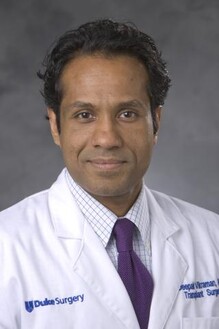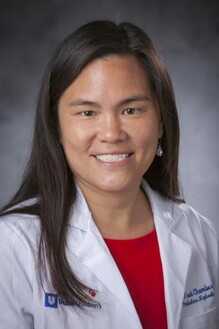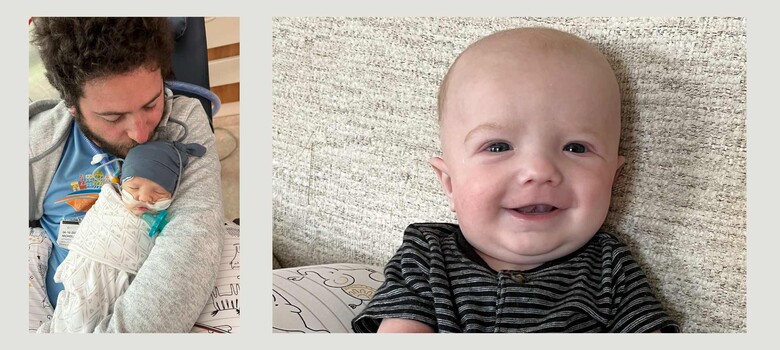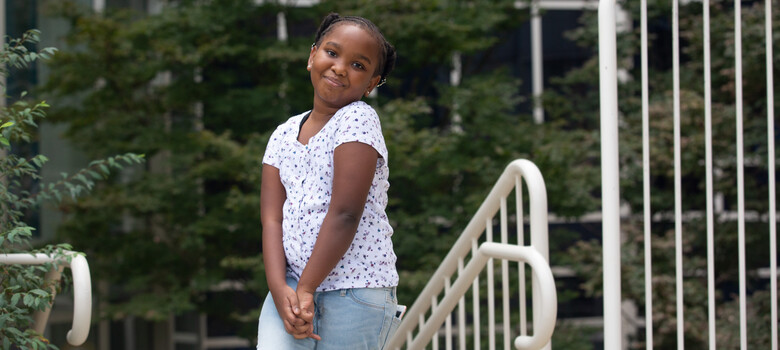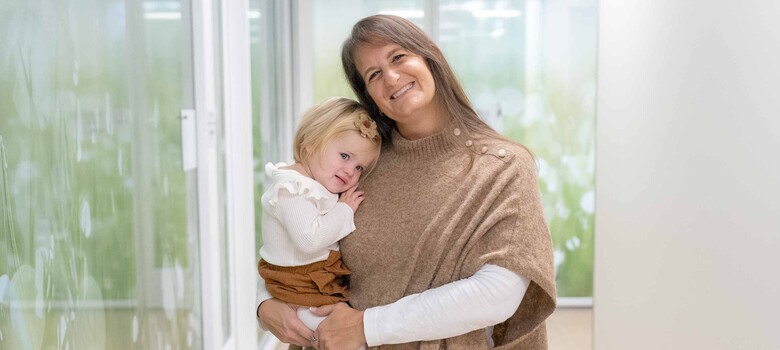Child with a Rare Genetic Disorder Is Full of Spunk After a Kidney Transplant at Duke

From left, Michael, Gunner, and Caitlin Hart smile outside Duke Children's Hospital & Health Center.
A few weeks before Gunner Hart was born, his parents learned that he had a rare genetic disease that could cause irreparable damage to his kidneys, liver, and lungs. Thanks to careful planning by a team of Duke Health specialists, vigilant care, and two kidney surgeries -- one to remove a kidney and then a kidney transplant -- today Gunner is a happy, active three-year-old.
Coordinated Care from a Network of Specialists
When Gunner’s mother, Caitlin Hart, was 34 weeks pregnant, prenatal genetic testing revealed that her son had autosomal recessive polycystic kidney disease (ARPKD). Children with ARPKD can be born with immature lungs, liver problems, and enlarged kidneys, and about 30% die in the first month of life. Planning ahead to manage the condition is key. When Gunner was born, a team of Duke Health specialists was ready.
Gunner was luckier than most babies born with ARPKD. His liver and lungs were largely unaffected by the disease. But his kidneys were enlarged and full of cysts. Ultimately, he would need a kidney transplant. From day one, Delbert Wigfall, MD, a pediatric nephrologist at Duke Health, was involved in Gunner’s care. “We carefully managed him, and for several months he did okay. Then it became clear that he was not growing as rapidly as he should. The issue really became one of nutrition.”
That’s when a Duke Health pediatric hepatologist and gastroenterologist got involved. Gunner was suffering from ascites -- fluid buildup and swelling in the abdomen that left him weak and malnourished. “The doctor was a godsend,” Caitlin Hart said. As part of Gunner’s team of doctors, she worked closely with the family to treat his condition and help him grow and thrive.
Anything to Avoid Dialysis
However, Gunner wasn’t out of the woods. At six months old, his kidney function was declining, and his enlarged kidneys were crowding his other organs, including his stomach and liver. The traditional approach was to remove both kidneys and begin dialysis while he waited for a transplant, but Caitlin and Gunner’s father, Michael, wanted to avoid that. Instead, Jonathan C. Routh, MD, MPH, a pediatric urologist at Duke Health, suggested another option -- removing Gunner’s left kidney to provide more room in his abdominal cavity. “Many centers would have taken out his kidneys and put him on dialysis, but we had the experience to manage him with one kidney,” Dr. Wigfall said.
While Gunner’s single kidney could support him for the short-term, it was not a permanent solution. Eventually, he would need a kidney transplant, and his parents were adamant about being living donors. They got to work to get as healthy as possible -- exercising, eating well, and losing 70 pounds between them -- so that one of them could donate a kidney when the time came. They were both evaluated, and Michael Hart was a perfect match.
A Beautiful Kidney
On the day of Gunner’s kidney transplant, Caitlin was nervous, but members of the surgical team kept her constantly informed. “All of the surgeons came out at different points to talk to me. They said Michael's kidney was beautiful. It fit perfectly where Gunner’s diseased kidney was. And there weren't any complications for either of them.” Michael Hart returned to their home in Oxford, NC the next day. After six days in the hospital, two-year-old Gunner was running the halls.
Today, Gunner is full of spunk, and his doctors agree that his future looks bright. “It's wonderful watching the person you love come back to life,” said Caitlin. We didn't really know that Gunner could thrive like this. His doctors have been wonderful -- the way they work together and included us in Gunner’s care. We are just so grateful.”
